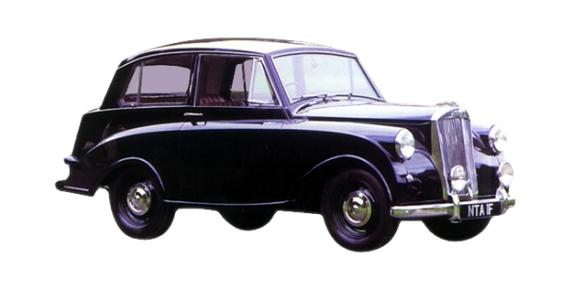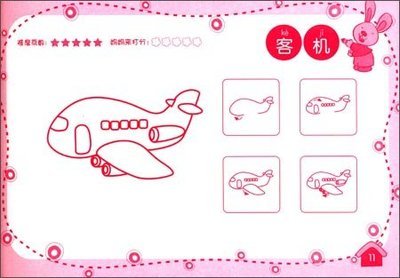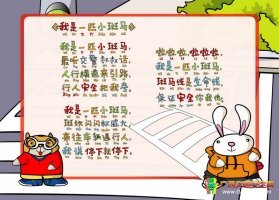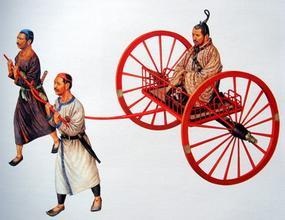交通工具Vehicle
一.交通工具名称Vehicle:
自行车bicycle;人力三轮车pedicab; 电瓶车 battery bicycle; 三轮车 tricycle; 摩托车motorcycle;踏板摩托车 scooter; 小汽车car;出租车taxi;
面包车(中巴车)minibus;公共汽车bus;双层巴士 double decker bus; 长途汽车coach;卡车truck;货车(有蓬)van;
地铁subway/metro;火车train;
轮船ship;小船boat; 游艇 yacht;轮渡 ferry;
飞机plane/airplane/aircraft;直升飞机helicopter;太空飞船spaceship
救护车 ambulance;消防车 fire engine;缆车 cable car;
The plane is in the sky.
The ship is in the water.
The car is on the ground.
在英语中,表示乘某种交通工具要用“by+交通工具名称”这一介词短语。注:by后的名词一律用单数,而且这一名词前一般不加冠词。如:by bike / bus/ car/ train/ motorbike/electric bike/subway by plane/air by boat/water by ship/sea
当交通工具名称前有“ a /the”时,不能再用“ by”, 要用“on” 或 “in” 。如: on a (the) bus/bike/motorbike/electric bike/ train/subway
in a plane/ship/taxi/car
但是,表示步行时,要用on foot.
二.怎么问
How do you get to …?
How does „ get to school?
How far is it?
How long does it take?
How do you get to school?
How far is it from your home to school?
How long does it take?
三.注意点
英语中表示交通方式的形式很多,但总的来说,不外乎两种方式,即:用介词和动词来表示。
用介词表示。
1. by + 表示交通工具的名词,泛指“乘/坐某种交通工具”,其中名词前无任何修饰语,且只能用单数。如:
He came by train, but his wife came by bus.他坐火车来的,但他妻子坐汽车来的。
Travelling by elephant is great fun. 骑象旅行很有趣。
类似的词组还有:by car乘车;by plane乘飞机;by ship乘船;by taxi乘计程车;等。
2. in/on + 表示交通工具的名词 , 或泛指或特指“乘/坐某种交通工具”,其中名词前常有冠词、物主代词、指示代词或名词所有格等修饰语,名词可以是单数或复数。
① bus,train,boat,plane,ship等有厢,有舱的名词前,用介词in或on。如: We are going there in/on a bus.我们将乘公共汽车去那里。(泛指)
Don't come here on /in the ship.不要坐船来这里。(特指)
② bike或motorbike前,只能用介词on。如:
They go to work on their bikes.他们骑自行车上班。(特指)
She went out on her new motorbike. 她骑着她的新摩托车出去了。(特指)
③ car,taxi前,多用介词in。如:
We are going to France in John’s car. 我们将坐约翰的车去法国。(特指)
3. by/on + 表示交通工具的名词,特指“乘/坐某一趟/辆/艘(车,船等)”,其中名词为单数,其前常有定冠词与数词或具体时刻一起作修饰语。如:
They came here by/on the first bus.他们是坐头班车来的。
You can get there by/on the Number 10 bus / bus No.10. 你可以乘10路公共汽车到那里。 He went up to London by/on the 10:30 (train). 他是乘10时30分的火车去伦敦的。
4. by + 表示交通工具的名词,泛指“乘/坐某种档次的交通工具旅行”,其中名词为单数,其前常有表示“等级或档次”的形容词作修饰语。如:
She travels by third-class train. 她乘三等车旅行。
I will go to Beijing by the fast train. 我将乘快车去北京。
He flew to Paris by first class (plane). 他坐头等舱飞往巴黎。
He went to Tokyo by a large ship.他乘一艘大船去了东京。
5. by + 表示交通线路或交通线路所经范围的名词 ,表示“经由陆路/水路/空中等线路旅行或运输”,其中名词为单数或不可数,其前无任何修饰语。如:
Shall we go by land or by sea ? 我们是由陆路去还是由水路去?
It saves a lot of time to travel by air. 乘飞机旅行可以节省许多时间。
类似的词组还有:by water由水路;by road由公路;by rail由铁路;等。
6. on + 表示人或动物特定身体部位的名词,表示“步行或骑马/骆驼”,其中名词只能是foot、horseback或 camelback,其前无任何修饰语。如:
She usually goes to school on foot. 她通常步行上学。
Our friends arrived on horseback.我们的朋友是骑马到的。
7. on + 表示交通工具的动物名词,表示“骑驴/马/象/骆驼”,其中名词为donkey、horse、elephant或camel,其前常有不定冠词a/an。如:
The old man used to go out on a donkey. 那个老汉以前都是骑驴外出的。
He went there on a horse. 他骑马去了那里。
类似的词组还有:on an elephant骑象;on a camel骑骆驼。
用动词表示。
1. “动词 + to + 地点名词”或“动词 + 地点副词”。 这种动词主要是walk (步行),ride(骑车),drive(开车),fly(乘飞机),sail(乘船)等。如:
I usually walk to school. 我通常步行上学。
We sometimes ride to school. 我们有时骑车上学。
They drove to the station. 他们开车去了车站。
Jack flew there last Sunday. 杰克上星期乘飞机去那里了。
We sailed across the Atlantic in five days.我们乘船用了五天的时间横渡大西洋。
2. “take a/the + 表示交通工具的名词”,表示“乘/坐„„”。如:
Will you take a bus to go there?你乘汽车去那儿吗?
I took a taxi to the hospital. 我坐计程车到医院去了。
Tom often takes the train to go to work. 汤姆常坐这趟火车上班。
类似的表达还有:take a ship(乘轮船),take a plane(乘飞机)等。
3. “ride a/an + bike,motorbike”或表示交通工具的动物名词,表示“骑„„”。如: I ride a bike to work every day. 我天天骑自行车上班。
He came here riding a horse /an elephant. 他骑马/象来到了这里。
4. “ride on/in + a/an + 表示交通工具的名词”,表示“乘/坐/骑„„”。如:
She gets sick when she rides in/on a bus. 她坐公共汽车时晕车。
The boy liked to ride on a motorbike.那男孩喜欢骑摩托车。
He often rides on an elephant to travel. 他常骑象旅行。
类似的表达还有:ride in/on a ship/train/plane/boat等。
【辨析】ride a bike着重动作;ride in/on a bike着重状态。
5. “have/take a ride in/on + 表示交通工具的名词”,表示“乘/坐/骑一下/次„„”。如: Would you like to have/take a ride in my new car? 你要不要坐坐我的新车?
Can I have/take a ride on your bike? 我能骑一下你的自行车吗?
He let me have/take a ride on his camel. 他让我骑了一下他的骆驼。
6. “go for a ride in/on + 表示交通工具的名词”,表示“乘/坐/骑„„去兜风”。如: They went for a ride on their horses/bicycles.他们骑马/自行车去兜了一圈。
Let’s go for a ride in the car/a car ride. 我们乘汽车去兜风吧。
I went for a ride on my horse before breakfast. 早餐前我骑马出去遛了遛。
巩固练习:
I:用by,in,on,take填空。
1.—How do you go to school every day?
—____ bike.
2.They will go to the cinema ____ bus.
3.He went to the park ____ a car yesterday.
4.Helen will go there ____ the 12:00 bus.
5.Will you ____ the bus to Beijing tomorrow?
II:就划线部分提问。
1.(对划线部分提问)
2.(对划线部分提问)
Keys:I: 1.By 2.by 3.in 4.On/by 5.Take
II: 1. How does Mr Green go to the post office?
2. How is Ann going shopping ?
1.用“by+交通工具名词”表示交通方式。此时交通工具的名词只能用单数,不能用复数,也不能被冠词或物主代词等限定。如:by bike(骑自行车),by bus(乘公共汽车),by car(乘出租车),by train(乘火车),by ship(乘轮船),by plane(乘飞机)等。如: They often go home by bus.他们经常坐公共汽车回家。
I come here by taxi.我乘出租车来这儿的。
He goes to work by bike.他骑自行车去上班。
2.用“by+交通路线的位置”来表示交通方式。如:by land(从陆路),by water(从水路),by sea(从海路),by air(乘飞机)等。如:
They go to England by air.他们乘飞机去英国。
3.用“in(on)+交通工具名词”。此时交通工具名词前必须有冠词、名词所有格形式或形容词性物主代词等限定词修饰。其用法与“by+交通工具名词”相似。如:

He often goes to school on a(his)bike.他经常骑自行车去上学。
Don't come here on /in the ship.不要坐船来这里。
We go there in a car.我们乘小汽车去那里。
4.用“take a(the)+交通工具名词”表示交通方式。如:take a bus(乘公共汽车),take a train(乘火车),take a ship(乘轮船),take a plane(乘飞机);但“骑自行车”要用 ride a bike来表示。如:
Will you take a bus to go there?你乘汽车去那儿吗?
5.表示“步行去某地”,可用下列两种句式:
(1)go to +某地+ on foot。如:
She goes to work on foot.她步行去上班。
注意:on foot不可说成 on feet,on a/the/my foot,by foot等。
(2)walk to +某地。如:
He walks to school every day.= He goes to school on foot every day.
他每天步行去上学。
Bicycle: good for health and environment
Taxi: convenient and expensive
Car: fast and convenient but expensive and not good for the environment
Bus: cheap crowded
Train: cheap and cost too much time
Plane: fast and expensive
四.例句
How does Uncle Tom get to the Gym? He walks to the Gym.
How does Mr. Chen get to his company? He takes the car to the company.
How does Lily get to Shanghai? She takes the plane to Shanghai.
A: How do Bob and Mary get to school? A: How does John get to school? A: How do Paul and Yang Lan get to school?
A: How do you get to school?
B: I walk / ride a bike / take a bus / take a car / take the subway / take the train to school.
How do you usually get to school?
I usually get to school by bike, but sometimes I come on foot.
How does he get to school? He rides a bike to school. He walks to school.
How does she go to work? She takes the train to work.
How does she go to work? She takes a taxi to work. She takes a ship to work.
How does he go to work? He takes a subway to work.
She usually goes to school on foot.
He rides a bike to work every day.
He gets to work by bike every day.
He gets to work on his bike every day.
She often gets to work by car.
She often gets to work in her car.
She often drives to work.
He takes the subway to work.
He gets to work by subway.
He took a spaceship to the space.
He got to the space by spaceship.
A: How do you get to…? B: I take/ride /walk… I get to …. by …/on...
It takes her about 40 minutes to go to school by bike.
It takes her about 15minutes to go to school by car.
How long it takes you to get from home to school? It takes me 20 minutes to go to school by bike. How do I get to school? First, I walk to the bus stop, and then I take a bus to School.
How long does it take from home to school? It takes about 35 minutes.
How far is it from your home to school? (It’s) about 5 kilometers.
How far is it from your home to school? (It’s) about… kilometers.
A: How do you get to school?
B: Well, I usually _________but sometimes I___________.
A: How far is it from your home to school?
B: About____________.
A: How long does it take?
B: It takes __________by bus and __________by subway.
Home to school 10 kilometers take a bus 10 minutes take the subway 5minutes
A: Hi, Nancy, Where do you live?
B: I live in Huanggu District.
A: How long do you live from school?
B: I live five miles from school.
A: How do you get to your school?
B: By bike, sometimes on foot.
A: How long does it take you to get to school by bike? B: About ten minutes.
A: Don't you like walking to school?
B: No, I don't. It takes long time.
百度搜索“爱华网”,专业资料,生活学习,尽在爱华网
 爱华网
爱华网

